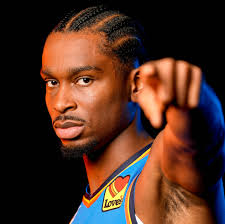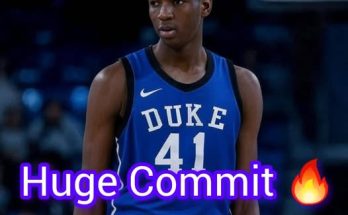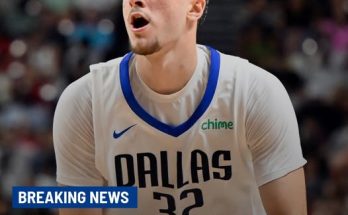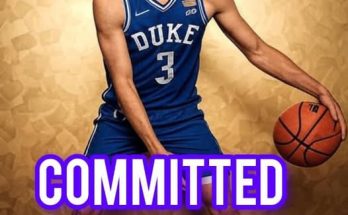In a stunning development that could send shockwaves throughout the NBA, Shai Gilgeous-Alexander—Oklahoma City Thunder’s dynamic superstar and a top-three finalist for the 2025 NBA Most Valuable Player award—has reportedly declined a contract extension worth $78.5 million. The deal, which was offered by a prominent global brand believed to be outside the realm of traditional NBA endorsement partners, represents a pivotal moment in SGA’s career—not just for its financial implications, but for what it reveals about his priorities, brand vision, and long-term aspirations.
This decision has left fans, analysts, and marketing executives scrambling for answers. Why would a player on the brink of becoming the face of the league turn down such a massive deal? The answer, as it turns out, is more layered than money.
The Evolution of Shai Gilgeous-Alexander
To fully understand the magnitude of this decision, it’s essential to appreciate the rise of Shai Gilgeous-Alexander. Drafted 11th overall in the 2018 NBA Draft by the Charlotte Hornets and traded on draft night to the LA Clippers, SGA quickly demonstrated poise, versatility, and an old-school polish rare among young guards. But it wasn’t until his arrival in Oklahoma City via the Paul George trade that his stardom began to ascend.
Over the past three seasons, Gilgeous-Alexander has transformed from a promising young guard into one of the NBA’s most lethal scorers. In the 2024–25 season, he averaged 31.2 points, 6.7 assists, 5.8 rebounds, and 1.9 steals per game while shooting 51% from the field and 39% from three-point range. His silky smooth handle, elite footwork, defensive tenacity, and mid-range mastery evoke comparisons to Hall of Fame greats, yet his demeanor is quiet, reserved, and completely authentic.
At just 26 years old, SGA’s career is reaching its peak, and he’s no longer just a player to watch—he’s the player to build around.
MVP Contender and Cultural Icon
Shai’s status as an MVP contender has been hard-earned. Alongside fellow nominees Nikola Jokić and Jayson Tatum, SGA has elevated the Thunder from a rebuilding franchise into a true Western Conference threat. With a young core including Chet Holmgren, Jalen Williams, and Josh Giddey, the Thunder exceeded expectations this year and finished as the #2 seed in the West.
SGA’s impact, however, extends beyond the hardwood. Known for his fearless fashion, meticulous grooming, and understated charisma, he has cultivated a unique brand identity that fuses NBA excellence with high fashion. GQ features, runway appearances, and collaborations with European designers have all helped transform Gilgeous-Alexander into a global icon. That’s part of the reason why his decision to turn down $78.5 million has more to do with brand autonomy than bank accounts.
Inside the Declined $78.5 Million Deal
According to multiple sources close to the negotiation, the $78.5 million offer came from a well-established international apparel and lifestyle brand seeking to break into the North American basketball market. The multi-year endorsement would have made SGA the brand’s North American face—complete with exclusive merchandise lines, commercials, and creative oversight.
So why decline?
The key issue appears to be creative control and long-term brand alignment. While the financial terms were appealing, insiders say SGA felt the brand’s vision clashed with his own. Rather than cash in immediately, Shai is said to be focusing on building something bigger: a lifestyle empire that seamlessly blends fashion, basketball, and personal integrity.
Sources close to the Thunder organization reveal that Gilgeous-Alexander has been working with a select group of stylists, designers, and media professionals to launch his own fashion label. He wants to control the narrative, own the intellectual property, and create something that speaks to his generation and beyond.
Turning down $78.5 million, then, wasn’t a rejection of money. It was a bold statement about independence.
The Changing Business of Basketball
SGA’s decision is emblematic of a larger shift in how modern athletes view endorsements. In the past, athletes signed huge endorsement deals for shoe contracts, drinks, tech companies, or fashion brands. The more zeros, the better.
But today’s athletes—especially those like Shai who combine global appeal with digital fluency—are leaning toward ownership. LeBron James, Kevin Durant, and Stephen Curry have led the way in building empires that extend into production companies, media brands, and start-ups. Now, Shai may be joining that club.
According to a league executive familiar with the matter:
“This wasn’t about rejecting the money. It was about rejecting the idea that he needs someone else’s platform. He’s betting on himself to be the platform.”
Thunder’s Silent Confidence
As rumors of the declined deal began swirling, the Oklahoma City Thunder organization remained quiet. Behind the scenes, however, sources indicate that Thunder executives view the development as a positive sign. Rather than suggesting dissatisfaction, it reflects SGA’s long-term investment in staying in OKC.
Gilgeous-Alexander is under contract through the 2026–27 season, but the front office has quietly begun preparing to offer him a supermax extension in the summer of 2026—one that could reach north of $300 million over five years.
More importantly, the team believes that SGA’s decision reinforces his intent to build a legacy—not just chase headlines or short-term gains. That’s good news for a franchise with championship aspirations.
Reaction Around the League
The NBA community reacted swiftly to the news of the declined deal. ESPN’s Stephen A. Smith praised the move, calling it “one of the most power-conscious decisions I’ve seen in recent NBA history.” Meanwhile, TNT’s Charles Barkley questioned the wisdom of turning down that much money:
“I love Shai’s game. But $78 million ain’t something you see every day. You better be sure you’ve got a plan.”
Players, on the other hand, seemed to rally around SGA. Phoenix’s Devin Booker posted a cryptic Instagram story that read, “When you know who you are, the money don’t move you,” while Miami’s Jimmy Butler simply tweeted: “Boss.”
The Road Ahead
What’s next for Shai Gilgeous-Alexander? For starters, he remains laser-focused on leading the Thunder through a deep playoff run. The MVP conversation remains intense, but even if he doesn’t take home the award, his stature as a top-five player is already cemented.
Off the court, all eyes will be on his next move. Will he launch his fashion line in 2025? Could he form his own creative agency? Is he working on something tech-driven, media-centered, or philanthropic? One thing’s clear: he’s not waiting for brands to define his image. He’s doing it himself.
A New Blueprint for Stars
Shai’s rejection of the $78.5 million deal sets a new precedent for emerging superstars. In the new era of athlete empowerment, players are no longer just basketball talents—they are CEOs, strategists, and storytellers.
This moment could redefine what success looks like for the next generation. It’s not just about All-Star games or signature sneakers. It’s about autonomy, authenticity, and building something that outlasts the career.
In turning down one of the largest non-shoe endorsement deals ever offered to an NBA player his age, Shai Gilgeous-Alexander didn’t just make headlines. He made a statement.
A statement that echoes louder than any buzzer-beater.
Final Thoughts
In many ways, this saga isn’t about what Shai Gilgeous-Alexander declined. It’s about what he’s building. As he continues to dazzle on the court and establish a new cultural identity off it, he’s showing the world that he’s not just a basketball player—he’s a movement.
And if the early signs are any indication, it’s a movement worth watching.
Stay tuned—because SGA’s next move may be even bigger than the last.



